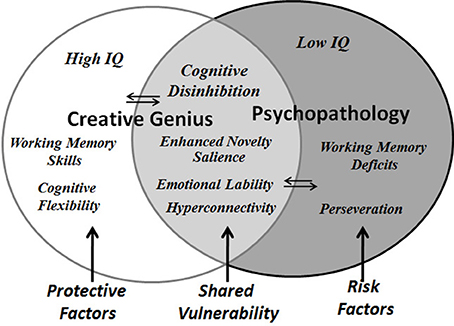Friday, October 31, 2014
how would you like to live in denial of what goes on under the stairs?
By
CNu
at
October 31, 2014
14
comments
![]()
Labels: American Original , Living Memory , Race and Ethnicity , What IT DO Shawty...
rule of law: these apartheid governments though...,
By
CNu
at
October 31, 2014
0
comments
![]()
Labels: Race and Ethnicity
reckless eyeballing in the 21st century?
By
CNu
at
October 31, 2014
11
comments
![]()
Labels: Race and Ethnicity
colonial occupation internships in urban public school districts?
By
CNu
at
October 31, 2014
0
comments
![]()
Labels: human experimentation , Race and Ethnicity
Thursday, October 30, 2014
rule of law: who do you believe?
By
CNu
at
October 30, 2014
0
comments
![]()
Labels: individual sovereignty , the wattles
the ebola weather report
MoBS Lab | The 2014 West African Ebola Outbreak is so far the largest and deadliest recorded in history. The affected countries, Sierra Leone, Guinea, Liberia, Nigeria, and recently Senegal have been struggling to contain and to mitigate the outbreak. We have developed a modeling approach aimed at assessing the progression of the epidemic in West Africa and its international spread under the assumption that the EVD outbreak continues to evolve at the current pace.
Our results have been published in PLOS Currents Outbreaks. However, our modeling work has been motivated by the need for a rapid assessment of the EVD outbreak trends and the obtained results may change as more information becomes available from the EVD affected region and more refined sensitivity analysis can be implemented computationally. For this reason, the paper on PLOS Current Outbreaks shall be considered as a live paper that is constantly updated with new data, projections and analysis.
In this web page we try to provide a home for such a "live" paper. More in general we link to constantly updated versions of the paper, new figures/analysis and supplementary data files.
By
Dale Asberry
at
October 30, 2014
1 comments
![]()
Labels: doesn't end well , weather report
more than a public good, it's species survival...
Washington Post | Since 1985, U.S. college costs have surged by about 500 percent, and tuition fees keep rising. In Germany, they've done the opposite.
By
Dale Asberry
at
October 30, 2014
0
comments
![]()
If you'd told us the truth, we would've told you to shove that red pill right up your ass...
By
Dale Asberry
at
October 30, 2014
0
comments
![]()
googol's deepmind has stated that its goal is "solving intelligence"...,
By
CNu
at
October 30, 2014
0
comments
![]()
Labels: cognitive infiltration , egregores , tactical evolution
elon musk's fears not completely crazy?
By
CNu
at
October 30, 2014
0
comments
![]()
Labels: count zero , egregores , Great Filters
Wednesday, October 29, 2014
what real denial of access to public spaces looks like...,
By
CNu
at
October 29, 2014
1 comments
![]()
Labels: Deep State , elite , establishment , hegemony , institutional deconstruction
googol is not what it seems?
By
CNu
at
October 29, 2014
0
comments
![]()
Labels: cognitive infiltration , Deep State , elite , establishment , global system of 1% supremacy , hegemony
Tuesday, October 28, 2014
bat bombs bringing the ebola
By
Dale Asberry
at
October 28, 2014
5
comments
![]()
Labels: high strangeness , History's Mysteries , tricknology
can the Cathedral survive: if you can't tyrannize nerds how you gonna tyrannize gunsels?
By
CNu
at
October 28, 2014
2
comments
![]()
Labels: Cathedral , civil war , individual sovereignty , The Hardline
can the Cathedral survive: demand for action-free, politically-correct games cannot be coerced
By
CNu
at
October 28, 2014
0
comments
![]()
Labels: Cathedral , chess-not checkers , hustle-hard , individual vs. collective , institutional deconstruction
fight like a man: winning public opinion warfare
By
CNu
at
October 28, 2014
0
comments
![]()
Labels: dominate , hustle-hard , individual sovereignty , What IT DO Shawty...
does couch potato 2.0 see these interwebs as "zillion channel" teevee?
By
CNu
at
October 28, 2014
0
comments
![]()
Labels: cognitive infiltration , consumerism , contraction , corporatism , de-evolution , Living Memory
Monday, October 27, 2014
even nazi scum gets respect because it will fight you to the death
By
CNu
at
October 27, 2014
1 comments
![]()
Labels: American Original , hegemony , Living Memory , Race and Ethnicity , What IT DO Shawty...
cathedral: the hard, cold, truth that fighting like a girl leads to an ass-whooping...,
By
CNu
at
October 27, 2014
0
comments
![]()
Labels: Cathedral , FAIL , not a good look
Sunday, October 26, 2014
why we need a neuroscience of creativity and psychopathology
By
CNu
at
October 26, 2014
12
comments
![]()
Labels: neuromancy , scientific mystery , subrealist oeuvre...
a head full of symphonies
By
CNu
at
October 26, 2014
0
comments
![]()
Labels: ability , awareness , gifts , Possibilities
Saturday, October 25, 2014
yale team projects 90,000 deaths in one liberian county alone by mid-december
Methods - We developed a transmission model of Ebola virus that we fitted to reported EVD cases and deaths in Montserrado County, Liberia. We used this model to assess the effectiveness of expanding EVD treatment centres, increasing case ascertainment, and allocating protective kits for controlling the outbreak in Montserrado. We varied the efficacy of protective kits from 10% to 50%. We compared intervention initiation on Oct 15, 2014, Oct 31, 2014, and Nov 15, 2014. The status quo intervention was defined in terms of case ascertainment and capacity of EVD treatment centres on Sept 23, 2014, and all behaviour and contact patterns relevant to transmission as they were occurring at that time. The primary outcome measure was the expected number of cases averted by Dec 15, 2014.
Findings - We estimated the basic reproductive number for EVD in Montserrado to be 2·49 (95% CI 2·38—2·60). We expect that allocating 4800 additional beds at EVD treatment centres and increasing case ascertainment five-fold in November, 2014, can avert 77 312 (95% CI 68 400—85 870) cases of EVD relative to the status quo by Dec 15, 2014. Complementing these measures with protective kit allocation raises the expectation as high as 97 940 (90 096—105 606) EVD cases. If deployed by Oct 15, 2014, equivalent interventions would have been expected to avert 137 432 (129 736—145 874) cases of EVD. If delayed to Nov 15, 2014, we expect the interventions will at best avert 53 957 (46 963—60 490) EVD cases.
Interpretation - The number of beds at EVD treatment centres needed to effectively control EVD in Montserrado substantially exceeds the 1700 pledged by the USA to west Africa. Accelerated case ascertainment is needed to maximise effectiveness of expanding the capacity of EVD treatment centres. Distributing protective kits can further augment prevention of EVD, but it is not an adequate stand-alone measure for controlling the outbreak. Our findings highlight the rapidly closing window of opportunity for controlling the outbreak and averting a catastrophic toll of EVD cases and deaths.
Funding - US National Institutes of Health.
By
CNu
at
October 25, 2014
0
comments
![]()
Labels: Collapse Casualties , cull-tech , gain of function
Friday, October 24, 2014
please help a brotha out: wtf feed talkin-bout?
 RATHER THAN AWARE that after 50 years of VOTING FOR HIS SALVATION -
their CONSUMER STATUS makes them INCOMPETENT to provide ONE DAMNED BIT
OF STRUCTURAL ASSISTANCE to the people in West Africa.
RATHER THAN AWARE that after 50 years of VOTING FOR HIS SALVATION -
their CONSUMER STATUS makes them INCOMPETENT to provide ONE DAMNED BIT
OF STRUCTURAL ASSISTANCE to the people in West Africa.
By
CNu
at
October 24, 2014
4
comments
![]()
Labels: WTF?
Chipocalypse Now - I Love The Smell Of Deportations In The Morning
sky | Donald Trump has signalled his intention to send troops to Chicago to ramp up the deportation of illegal immigrants - by posting a...

-
theatlantic | The Ku Klux Klan, Ronald Reagan, and, for most of its history, the NRA all worked to control guns. The Founding Fathers...
-
NYTimes | The United States attorney in Manhattan is merging the two units in his office that prosecute terrorism and international narcot...
-
Wired Magazine sez - Biologists on the Verge of Creating New Form of Life ; What most researchers agree on is that the very first functionin...













